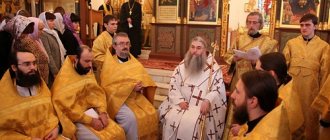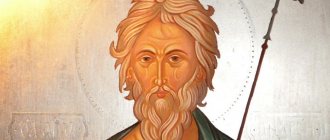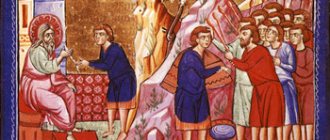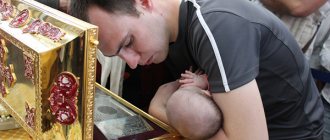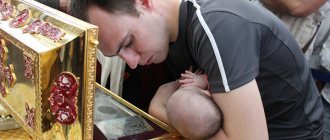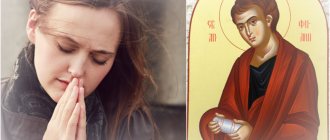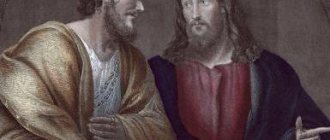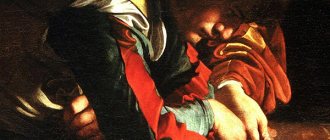Every year on November 29, an akathist to the Apostle James Alfeev is heard in Russian churches. On this day, the memory of one of the closest disciples and followers of Jesus Christ is celebrated, about whom we learn from the pages written by the three evangelists - Saints Matthew, Mark and Luke. From the little that they considered necessary to tell us, we will try to get an idea about this man who dedicated himself to God.
The Publican of Capernaum
As is commonly believed, the homeland of the Apostle James Alpheus was the city of Capernaum, located on the shores of Lake Tiberias, now called Kinneret. This largely determined his subsequent meeting with Jesus Christ, who chose this city as one of the main places of his preaching.
Before he responded to the call of Jesus Christ to join his twelve closest followers and disciples, the Apostle James Alpheus was a publican, that is, a tax collector. This occupation was considered despicable because the money went to the treasury of Rome, which conquered Judea in those years, and assistance to the occupiers was at all times considered treason. In addition, publicans deliberately inflated the amount of tax and, profiting from this, mercilessly robbed the people.
Brothers who followed Christ
According to the texts of the New Testament, the Apostle James Alpheus was the brother of the Evangelist Matthew, who, like him, served as a tax collector, but then believed in Christ and broke with his sinful past. Together they became one of the twelve chosen ones of God, numbered among the apostles and sent into the world to preach the Gospel. In addition, his other brother was also the closest follower of Jesus Christ and went down in history under the name of the Apostle Thaddeus.
It should be noted that even in the first centuries of Christianity, serious difficulties arose related to establishing the true history of the life of the Apostle James Alpheus. The reason was that, according to the Gospel, two more of Christ’s closest followers bore this name - James of Zebedee, who was the brother of John the Theologian, and also the half-brother of Jesus, who was one of the seventy apostles under the name of James, the brother of the Lord. Numerous discrepancies that appeared in the lives of Saint James Alpheus written later were the result of his identification with these personalities.
The Path of the Holy Apostle James
| Saint James Alpheus the Apostle XIII century, Greece Patmos, monastery of St. John the Evangelist |
If you asked a medieval pilgrim from Europe heading to the Holy Land where he was going, he would certainly answer you that he was going to Santiago de Compostela to take a blessing for the upcoming long journey from the Apostle James, the patron saint of all pilgrims and wanderers.
And today in Europe you can often meet unusually dressed travelers with a backpack on their back and a staff in their hands, looking for a road marked with a stone shell.
Santiago de Compostela, a city located in northwestern Spain and the capital of the autonomous community of Galicia, cannot be found on every map. But in this small city by modern standards, where the population does not exceed 100 thousand people, the greatest Christian shrine is kept - the relics of the Apostle James, the elder brother of the Apostle John the Theologian.
***
“And having gone on from there a little, He saw James Zebedee and John his brother also in a boat mending nets; and immediately called them. And they, leaving their father Zebedee in the boat with the workers, followed Him" (Mark 1: 19-20), - this is how the holy apostle and evangelist Mark describes the calling of James and John, simple fishermen from Galilee, by the Lord, called by the Lord "sons of thunder" "(see: Mark 3: 17) for his impetuous disposition and hot temperament.
Subsequently, it was to James, John and Peter that the Savior repeatedly revealed His Divine dignity and power: they were present at the resurrection of the daughter of the leader of the synagogue Jairus (see: Mark 5: 37–43; Luke 8: 51–56), at the healing of the mother-in-law of the Apostle Peter in his house (see: Mark 1: 29–31), during a conversation about the destruction of the temple (see: Mark 13: 3), witnessed the Transfiguration of Christ on Mount Tabor (see: Mark 9: 2), accompanied the Savior in the Garden of Gethsemane before He was seized by guards sent by the high priests and scribes.
After the Resurrection of the Lord and after receiving the Holy Spirit in the Upper Room of Zion, all the apostles dispersed by lot to different countries to preach the Gospel. Church tradition says that Jacob Zebedee went to testify about Christ in distant Spain. Having founded Christian communities there, Saint James returned to Jerusalem, where in the year 44 (according to some sources - between 41 and 44) he was the first of the apostles to suffer martyrdom by beheading on the orders of King Agrippa I, the grandson of Herod the Great (see: Acts 12:1–2).
Further history is contained in many folk legends that do not completely agree with each other. According to the most famous version, set forth by the historian Honorius Augustodunsky[1], two of the apostle’s disciples, Athanasius (Athanasio) and Theodore (Teodoro), having put the teacher’s body in a boat, set off by sea to look for a place for his worthy burial. A few days later, the unmanned ship miraculously washed up on the shores of Galicia, the westernmost region of the Spanish province. Having climbed up the Ulya River to the small Celtic city of Iria Flavia (modern Padron), the disciples began to ask a noble woman named Atia (in oral tradition - Lupa) for permission to bury the Apostle James in these lands. Wanting to destroy the foreigners, she sent them to the local pagan ruler, who threw the Christians into prison. But the Angel of the Lord brought them out of captivity unharmed. Struck by this miraculous event, the king and many of his associates believed in the Savior and helped bury the body of the Apostle of Christ in the tomb of Atia. Later, Atanasio and Teodoro themselves were buried there.
As evidenced by excavations that discovered a fairly large cemetery next to the apostolic tomb, a small monastic settlement existed here for some time. But by the end of the 2nd century the tomb gradually fell into disrepair. The surrounding areas are overgrown with forest. And the holy place turned out to be hidden and inaccessible to pilgrims for a long time.
Only in the first half of the 9th century, a certain hermit monk named Pelayo discovered the tomb, seeing a strange radiance in the field, which led him to the ark with the incorruptible relics of the Apostle James. He immediately reported his discovery to the Bishop of Iria, Theodomir. Already by 830, the first chapel appeared on the tomb of the apostle and his disciples, which was then replaced by two stone cathedrals. And the place where the relics were found was called Compostela
, which means “Field of Stars” in Latin. From that moment on, a continuous stream of pilgrims from all over Europe reached the holy tomb.
During the difficult period for Spain, which was experiencing the Arab conquest, the Holy Apostle James began to be perceived and revered as the heavenly patron and protector of the country. The Spaniards consider it as such to this day, reverently treating the shrine kept in Santiago de Compostela.
Medieval chronicles testify to numerous miracles and appearances of the apostle to Spanish soldiers during the expulsion of Muslims from the Iberian Peninsula, which went down in history as the Reconquista[2]. It is no coincidence that the motto of the knights who fought against the Moors were the words “Saint James! Spain, attack! (“¡Santiago y cierra, España!”), which became a call to unite against enemies.
| Cancer with the relics of St. ap. Jacob Zebedee |
At the end of the 10th century, Santiago de Compostela was conquered by the famous Arab commander Al-Mansur, who ordered to destroy the city, remove the bells from the Compostela Cathedral, pouring them into lamps for the mosque in Cordoba, but the Arabs did not touch the tomb itself.
At the end of the 11th century, King Alfonso VI ordered the construction of a new majestic granite cathedral on the site of the temple destroyed by the Moors. And on April 21, 1211, the cathedral was solemnly consecrated by Bishop Pedro Muñiz.
By the 12th century, the main pilgrimage routes to the city of St. James gradually took shape, which were formed under the influence of a number of important factors: the strongholds on the pilgrims’ path were monasteries, which at that time were large economic, political and cultural (this is how the pilgrimage to the tomb of the Holy Apostle is called in Spain Jacob) had a huge impact on the spread of cultural achievements in the Middle Ages and is currently included in the list of UNESCO World Heritage Sites.
Today, the “Way of St. James the Apostle” is a whole series of routes of varying complexity and duration: from several tens to several hundred kilometers.
There are at least six varieties of the route: French (camino francés), northern (camino del norte), original (camino primitivo), English (camino inglés), Portuguese (camino portugués) and Via de la Plata ). According to other estimates, there are about 15 such paths.
The most ancient routes to the city of the Apostle James were the original and northern routes, since by the 9th century almost the entire Iberian Peninsula was under the rule of the Cordoba Caliphate and the only safe routes were those through the coastal northern territories.
During the Reconquista, as lands were recaptured from the Arabs, other pilgrimage routes emerged. The most famous and most popular route today is the French one, the total length of which is about 800 kilometers. Its popularity is explained by the fact that, despite its duration, it is the easiest route in terms of terrain, where there is almost no bad weather, in contrast to the northern routes with their rough terrain and frequent rains. In addition, the development of the French route was associated with the support provided to it by the Pope and many Christian kings who made pilgrimages along this road to Santiago de Compostela. The route begins in the French Pyrenees in a place called Saint-Jean-Pied-de-Port and then after the Roncesval Gorge passes through such ancient Spanish cities as Pamplona, Logroño, Burgos, Leon, Astorga, Ponferrada.
You can walk this entire route, which will take from two weeks to a month, or you can travel it on horseback or on a bicycle. Everyone chooses a route according to their strength.
On each of the routes, the pilgrim will find a well-developed infrastructure of shelters for pilgrims, or, as they are called in Spain, albergues (
albergues
)
. Guidelines for travelers heading to Santiago de Compostela are signs with the image of a shell, which is an ancient symbol, the emblem of the Apostle James, considered the patron saint of all pilgrims.
***
Today, a trip to the relics of St. James the Apostle, or, as it is called in Spain, Santiago, is one of the most popular pilgrimage routes in all of Europe. And the point is not only in the unconditional general Christian value of the shrine kept in the Compostela Cathedral. The attractiveness of this route also lies in the fact that in its classic version it is done on foot. Before touching the shrine, the pilgrim walks tens of kilometers, overcomes the obstacles of bad weather and the difficulties of the route.
With modern technical means and capabilities, a person can, in a matter of hours, by plane or train, reach any limit of the earth and see with his own eyes what he previously read or heard about, without making much physical effort. “The Way of the Holy Apostle James” is perhaps one of the few routes that helps a person feel like an ancient pilgrim, preparing with labor and spiritual concentration to meet the great shrine.
***
The above considerations encourage us to think about such an important component of the life of a believer as making a pilgrimage.
| Cathedral in Santiago de Compostela |
It is obvious that pilgrimage is a pan-religious, widespread practice, testifying to our deep desire to get closer to the heavenly, to become closer to the points of contact between divine reality and the earthly world.
At the same time, it is capable of granting the believing heart empathy for the events of ancient times, when the Lord, wondrous in His saints, acting with His gracious power, showed signs and wonders and visibly determined the course of human history.
In this regard, the veneration of the apostles - self-seers and servants of the Word - is a wonderful example of the manifestation of Christian reverence for the Redemption accomplished by the Savior and the evangelistic feat of His closest disciples.
In the context of the Christian worldview, pilgrimage has traditionally been viewed not just as a sacred act, but as a liturgical, liturgical act. Paradigmatic in this regard was the worship of the shrines of the Holy Land. As one of the researchers rightly notes, Palestine “was thought of as the altar of a single temple (the world created by God), in which the liturgy from proskomedia to the Eucharist was constantly performed in all the integrity and simultaneity of this sacred action possible only in mystical space and time. So it was not the sacred rites of the liturgy that gradually changed, following their order before the gaze of the motionless pilgrim (as in the temple liturgy), but, on the contrary, the pilgrim moved from one topos to another, gradually approaching the apotheosis of the Bloodless Sacrifice, experiencing not memories of well-known events, but themselves these events, literally touching them through touching sacred objects... Therefore, the pilgrims did not travel around Palestine, like modern tourists, but, having gathered literally from all over the world, day and night they moved from altar to altar and accordingly participated in this service - in fact, they liturgized. Therefore, walking, if we talk about the idea of the genre, is by no means a journey, because it is impossible to consider the movement of a minister in the altar of a real temple during a sacred rite as a journey.”[3] .
| Today, the “Way of the Holy Apostle James” is a whole series of routes of varying complexity and duration: from several tens to several hundred kilometers |
In accordance with this, every pilgrimage had as its center the performance of Divine services at shrines associated with the personality, life path and spiritual feat of the saint of God.
A direct consequence of this was the practice of creating temples, or at least chapels, in which relics were placed and where prayerful worship actually took place.
The tradition of celebrating the Eucharist on the honorable remains of saints merged with the liturgical veneration of shrines. Historically, this phenomenon was recorded in the Orthodox Church in the form of antimensions - special plates, usually depicting the position of Christ the Savior in the tomb and containing part of the relics. It is significant that an indispensable attribute of the antimension is the signature of the bishop who consecrated it. The very presence of a signature is perceived as a delegation by the bishop to the priest of the right to perform the liturgy in a particular church.
In accordance with all of the above, it should be noted that an Orthodox pilgrim who decides to undertake a journey to the relics of the holy Apostle James will, without a doubt, face one significant difficulty on his way: the virtual absence of liturgical content of the pilgrimage. As a result, the need arises to fit the feat of “going to the shrine” into the context of the heterodox religious tradition. The pilgrimage follows routes formed during the Catholic Middle Ages, in accordance with the traditions of Western Christianity. For an Orthodox person, this poses a difficult task: to perform an act of veneration of an ancient Christian shrine without shaking one’s confessional identity, or, more simply, without deviating from the canonical norms and patristic tradition, without sinning against the doctrine.
It is obvious that for many of our compatriots this task seems difficult and often insoluble.
| Road St. Apostle James - signs on the way |
Another serious problem standing in the way of an Orthodox pilgrim to an ancient shrine is the remoteness of the place and, as a consequence, the high cost of the journey. The entire set of expenses for the trip (processing visa documents, paying for plane tickets, transfers around the country, accommodation on site, etc.) constitutes another equally significant problem that must be overcome by those who decide to venerate the relics of the “secular witness and servant of the Word” " .
Nevertheless, despite all the difficulties and obstacles, today an increasing number of our compatriots are ready to undertake the work and reverently honor the shrine. Many Orthodox Christians of the Russian spiritual tradition, when visiting Spain, look for an opportunity to touch an ancient relic.
Undoubtedly, the development of Orthodox pilgrimage is facilitated by the emergence of church communities on the Iberian Peninsula, both within the bosom of the Moscow Patriarchate and other fraternal Local Churches.
Fortunately, today the great Orthodox shrine - the honest relics of the Apostle James - are becoming more accessible to Orthodox Christians from Russia and other countries of the Russian world. With the cooperation of God, this process will develop, testifying to the continuation of the mission of the disciple of Christ - to be a fisher of men (cf. Matt. 4: 19), which he carries out to this day through the Providence of the Almighty.
The following sources were used when writing this article:
Parsegova G.
Camino de Santiago (Way of St. James the Apostle). The most unusual trip to Spain. M., 2012.
https://www.catedraldesantiago.es/
https://www.caminosantiago.com/
https://www.caminosantiago.org
https://www.xacobeo.es/
https://www.jacobeo.net/
https://www.rtve.esNuestros caminos a Santiago"); film “The Extraordinary Path” (“El camino mágico”) from the series “Landscapes of History” (“Paisajes de la historia”). – a series of documentaries from the series “Our Paths to St. James” (“Nuestros caminos a Santiago”); film “The Extraordinary Path” (“El camino mágico”) from the series “Landscapes of History” (“Paisajes de la historia”).
Sower of God's Word
Apostle James Alpheus is one of those who was given the Grace, having seen with his own eyes the risen Savior, to hear the words of Divine truth coming from his lips for forty days. From the pages of the Holy Gospel we also learn that, being on the tenth day after the ascension of Jesus Christ, together with his other eleven disciples and the Most Pure Virgin Mary in the Upper Room of Zion, he was honored to receive the Holy Spirit, who descended in the form of tongues of fire.
The life of the Apostle James Alpheus tells how, ignited by the fire of Christ’s teaching and diligently instilling faith, during his lifetime he began to be called the “Divine Seed.” The apostle earned such a high name by uprooting the thorns of sin and unbelief and planting in human hearts the shoots of the coming Kingdom of Heaven. His harvest were human souls saved from the depths of hell and eternal death.
The path of apostolic ministry of Jacob Alfeev
It is also known from the pages of the life to which regions the Apostle James Alpheus carried the gospel and where he sowed the word of God. In the first months after the ascension of Jesus Christ, his vast field was Judea itself, but then, together with the Apostle Andrew, he went to Edessa, the most important center of early Christianity in Asia Minor, located in the southeast of modern Turkey. This period of his ministry is described in the book “The Acts of the Apostles,” which is included in the texts of the New Testament.
Then the holy apostle continued his ministry in Gaza - one of the most ancient Philistine cities, located on the border with Judea, and in Gospel times was part of Syria. Returning to Jerusalem, the Apostle James Alpheus also preached to the inhabitants of the city of Eleutheropolis, who gathered in crowds of thousands to hear from his lips the words of the teaching that bestows eternal life. Their conversion to Christ was of particular importance, since it was in this city that Saint Ananias, the Bishop of Damascus, who once baptized the Apostle Paul, was killed.
Radiocarbon dating
The scientific publication Heritage Science presented the results of a study conducted by an international group of scientists from Western Europe.
Putting aside the relics of St. Philip (whose age remains a mystery), the researchers repeatedly radiocarbon dated a femur believed to belong to St. James, who died in 62 AD. Nothing is known for certain about his death and burial. Some sources contradict others.
According to scientific analysis, this relic is not related to Saint James, since it belongs to a man who lived 160-240 years after the death of the saint, revered equally in both the Orthodox and Catholic churches.
Death, which became the beginning of universal veneration
As the life of the Apostle James Alpheus further testifies, his earthly journey ended in the seaside town of Ostratsina, where the saint ended up on his way to preach in Egypt. The apostle's words were met with an outburst of anger on the part of the pagans, as a result of which he was captured and sentenced to crucifixion. Despite the severity of suffering, the closest disciple of Jesus Christ was happy to become like the Teacher in his death.
The veneration of the Apostle James, like the rest of the closest followers of Jesus Christ, was established in the first centuries of Christianity and became widespread in the 4th century, when the new and until then persecuted religion acquired official status. In those years, many Christian communities declared their succession directly from the apostles, thereby proving the right to independence in decision-making on the most important religious issues. This introduced additional difficulties into the compilation of the life of St. John Alpheus, since it was the reason for a number of fictitious testimonies about his stay in a number of cities.
Excerpt characterizing Jacob Alfeev
“I’m not saying anything about all the orders being good,” said Prince Andrei, “but I can’t understand how you can judge Bonaparte like that.” Laugh as you want, but Bonaparte is still a great commander! - Mikhaila Ivanovich! - the old prince shouted to the architect, who, busy with the roast, hoped that they had forgotten about him. – Did I tell you that Bonaparte is a great tactician? There he is speaking. “Of course, your Excellency,” answered the architect. The prince laughed again with his cold laugh. – Bonaparte was born in a shirt. His soldiers are wonderful. And he attacked the Germans first. But only lazy people didn’t beat the Germans. Since the world stood still, the Germans have been beaten. And they have no one. Only each other. He made his glory on them. And the prince began to analyze all the mistakes that, according to his ideas, Bonaparte made in all his wars and even in state affairs. The son did not object, but it was clear that no matter what arguments were presented to him, he was just as little able to change his mind as the old prince. Prince Andrei listened, refraining from objections and involuntarily wondering how this old man, sitting alone in the village for so many years, could know and discuss in such detail and with such subtlety all the military and political circumstances of Europe in recent years. “Do you think I, an old man, don’t understand the current state of affairs?” – he concluded. - And that’s where it is for me! I don't sleep at night. Well, where is this great commander of yours, where did he show himself? “That would be long,” answered the son. - Go to your Buonaparte. M lle Bourienne, voila encore un admirateur de votre goujat d'empereur! [here is another admirer of your servile emperor...] - he shouted in excellent French. – Vous savez, que je ne suis pas bonapartiste, mon prince. [You know, prince, that I am not a Bonapartist.] – “Dieu sait quand reviendra”... [God knows when he will return!] – the prince sang out of tune, laughed even more out of tune and left the table. The little princess remained silent throughout the argument and the rest of the dinner, looking fearfully first at Princess Marya and then at her father-in-law. When they left the table, she took her sister-in-law by the hand and called her to another room. “Comme c'est un homme d'esprit votre pere,” she said, “c'est a cause de cela peut etre qu'il me fait peur.” [What a smart man your father is. Maybe that’s why I’m afraid of him.] – Ax, he’s so kind! - said the princess. Prince Andrey left the next day in the evening. The old prince, without deviating from his order, went to his room after dinner. The little princess was with her sister-in-law. Prince Andrei, dressed in a traveling frock coat without epaulettes, settled down with his valet in the chambers assigned to him. Having examined the stroller and the packing of the suitcases himself, he ordered them to be packed. In the room there remained only those things that Prince Andrei always took with him: a box, a large silver cellar, two Turkish pistols and a saber, a gift from his father, brought from near Ochakov. Prince Andrei had all these travel accessories in great order: everything was new, clean, in cloth covers, carefully tied with ribbons. In moments of departure and change of life, people who are able to think about their actions usually find themselves in a serious mood of thought. At these moments the past is usually reviewed and plans for the future are made. Prince Andrei's face was very thoughtful and tender. He, with his hands behind him, quickly walked around the room from corner to corner, looking ahead of him, and thoughtfully shaking his head. Whether he was afraid to go to war, or sad to leave his wife - maybe both, but, apparently, not wanting to be seen in this position, hearing footsteps in the hallway, he hastily freed his hands, stopped at the table, as if he was tying the cover of a box, and assumed his usual, calm and impenetrable expression. These were the heavy steps of Princess Marya.
Apostle Andrew on the banks of the Volkhov
Having received the light of the Christian faith from Byzantium, Rus' fully inherited the tradition of venerating its preachers - the holy apostles. In this regard, it is interesting to note that the Apostle James enjoyed special love among the residents of ancient Novgorod, and it was in its churches that the icon of the Apostle James Alpheus was found more often than anywhere else. This is associated with two legends.
According to one of them, set out in ancient chronicles, the Apostle Andrew the First-Called, converting Gentiles to Christ, made a journey during which he visited the banks of the Dnieper, and then continued his journey north all the way to Novgorod. According to one version, along Volkhov he reached Lake Ladoga and even erected a cross on the island where the Valaam Monastery was subsequently founded. Perhaps this legend was born by the Novgorodians themselves, who wanted to prove the apostolic succession of their clergy.
In search of the relics of martyrs
“It seems most plausible to us that those who transferred the thigh to the Roman basilica were confident that it belonged to St. James,” eurekalert commented to the web publication. org professor of chemistry and archaeometry at the University of Southern Denmark Kaare Lund Rasmussen. “The femur was probably taken from a Christian burial, so it belonged to one of the first Christians, maybe an apostle, maybe not.”
What has been said may well turn out to be true in relation to other, not yet studied, remains revered by the Catholic Church.
“When the early Christian bishops, in search of the relics of the apostles who lived a hundred years before them, found ancient Christian burials, the remains of the saints located in them could have been buried at an earlier time,” the researchers suggest in the pages of the journal Heritage Science.
The transfer of relics becomes a tradition:
- The first known transfer of the remains of martyrs to a church dates back to 354 AD. Almost a hundred years after his death, the relics of Saint Babyla of Antioch were transferred from the cemetery in Antioch to Daphne and placed in a temple specially built for this purpose by the governor Caesar Gallus. Subsequently, the relics of Babyla were transferred to Constantinople and placed in the Studite monastery.
- Immediately after this event, the transfer of relics became popular: a year later the transfer of the relics of Saints Timothy, Andrew and Luke to Constantinople followed.
- From the second half of the 4th century, the popularity and distribution of relics increased.
- Despite criticism from Bishop Athanasius of Alexandria († 373) and the Coptic monk Shenoute of Atrip († 465), the relics of martyrs and saints began to be transferred into churches from the second half of the 4th century.
- Throughout the Roman Empire, ashes were exhumed, transferred, and reburied in the apse in close proximity to the altar of most major churches.
Editor: Irina Gusakova, Curator: Vladimir Gubarev
Birth of a legend
Without going into speculation about whether it has any real basis, we can only assume that this version gave rise to another legend, according to which, along with the Apostle Andrew, the Apostle James, who once accompanied him to Edessa, also visited Novgorod. A reasonable question: “Why couldn’t he do the same as his closest associate?” In any case, it was from Novgorod that the troparion of the Apostle James Alpheus and the akathist translated from Greek began their journey through the churches of boundless Rus'. As mentioned above, today his memory is celebrated annually on November 29.
Let this article conclude with a short prayer to the Apostle James Alpheus. In the humility of our hearts, let us utter the words that have been heard for many centuries: “Holy Apostle James, pray to God for us!”

